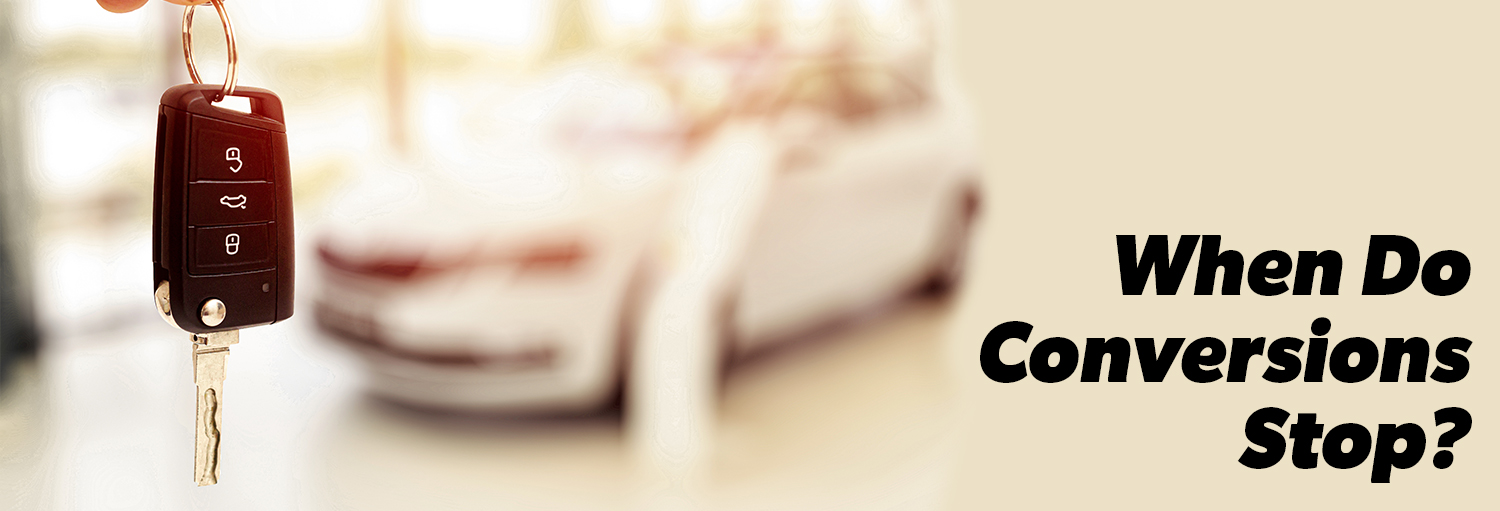In the automotive industry, we tend to think about conversions in a funnel-type journey not only within our marketing and sales but also with the outcome of the customer’s journey. We lead them down the path that we want them to follow and hope that they end up in a sale. Am I wrong? Many dealers judge all of their marketing and technology partners’ results on two things:
- How much did I spend?
- How many cars did I sell?
It’s typically that simple when evaluating performance. A dealer or General Manager looks at their doc sheet at the end of every month and, invariably, they see that they spent $3,000 with a marketing partner but only sold 3 cars for $800 in gross. (or some amount of money less than what they spent.) In my opinion, this is unfair to the vendor. With customers sometimes doing initial research when they are “thinking” about buying a car, the results that a vendor brings in may not show up for 90 days or more until the customer is actually ready to buy. If the Dealer/General Manager is making decisions on a 30-day basis on whether to keep or cut a marketing vendor based on these criteria and with this length of time, they may be doing a disservice.
I get the funnel analogy. Top funnel are people who may want to buy. Bottom funnel are people closer to buying. Dealers tend to ignore, however, the top funnel customers when analyzing vendor partner’s performance. Why? Because they can’t draw a straight line between a “lead” and a sale!
I’m not here to talk about sales attribution, however. Personally, I don’t think “conversions” ever end. I’ve had people drive 60 miles in a dense automotive community to mine just to save $50! That’s insane! What I’m talking about is whether the “sales” conversion is the “final” conversion.
Let me share a story. Presidential nominee and U.S. politician, “Barry Goldwater’s family owned a department store in Phoenix, Arizona. At a party Goldwater was seen in a garish, flowery tuxedo. ‘One thing about owning a store,’ he told the amused guests. ‘You’ve got to wear the things that don’t sell.” *1
Automotive dealerships tend to focus more on the sale than on the after sale. This amazes me seeing as service penetration accounts for a large majority of the revenue that keeps the lights on especially in the current time that we are in. Dealers, however, are still hyper-focused on sales and pay little attention to warranty, recall, parts and regular maintenance revenue.
This industry is NOT the “Field of Dreams!” It’s not “If you build it, they will come.” Do you think a customer that bought a car from you wouldn’t consider taking their vehicle to an independent like Jiffy Lube? You know that they would and, oftentimes do. That’s why the independents are winning the battle for customer-pay regular maintenance. Think that you’ve got a stranglehold on warranty and recall work? What about your competing franchise competition? With many states legislating retail labor rates for warranty service, dealers should be aggressively pursuing these customers.
While I’m not saying don’t pursue sales, I’m simply saying that, in my opinion, dealerships shouldn’t neglect other revenue producing departments in their stores. If you go to almost any dealer’s website, their “service” page either barely exists or is outdated. If, however, you visit Jiffy Lube’s website, it is filled with information, pricing and content informing customers how and why they should choose them. If we return to the story of Mr. Goldwater, the lesson that exists is that dealerships should be wearing the clothes that don’t sell. Namely service-related offerings that are being missed. Whether that’s because customers are choosing Jiffy Lube over the dealership, choosing to have warranty and recall service done by a competitor or dealerships missing out on customers that don’t even know they need it.
Conversions don’t stop at the sale. The customer’s journey doesn’t stop when they buy a car – unless you let it. Smart dealers realize this and continue their customers on a journey that can lead to a lifetime of service and referrals as well as brand and dealership loyalty. That one customer that bought a car from you can easily be transformed from the $800 loser to the $100,000 winner over their lifetime. My advice? Don’t stop at the sale. Nurture the relationship as long as possible while creating as many more as you can. Never stop. This is a long-distance run. Customers will follow if you are a good leader. As they say, the best leaders are also good followers. There is no “final conversion.” It’s a never ending relationship that will benefit your dealership – and a dealership simply needs to say “I do.”
*1 Fadiman & Bernard, Bartlett’s Book of Anecdotes, Page 141

Arnold Tijerina is the Brand Coordinator at Dealer World and has over 20 years’ experience in the auto industry, 7 of which were in retail before transitioning to positions which allowed him to share his knowledge and expertise in sales, digital marketing and social media with dealers. His retail experience encompasses most dealership sales and management positions with the majority of it as an Internet Director for two large auto groups in Southern California. He is an active and respected member of the online automotive community and is known for his expertise in digital marketing and social media.

